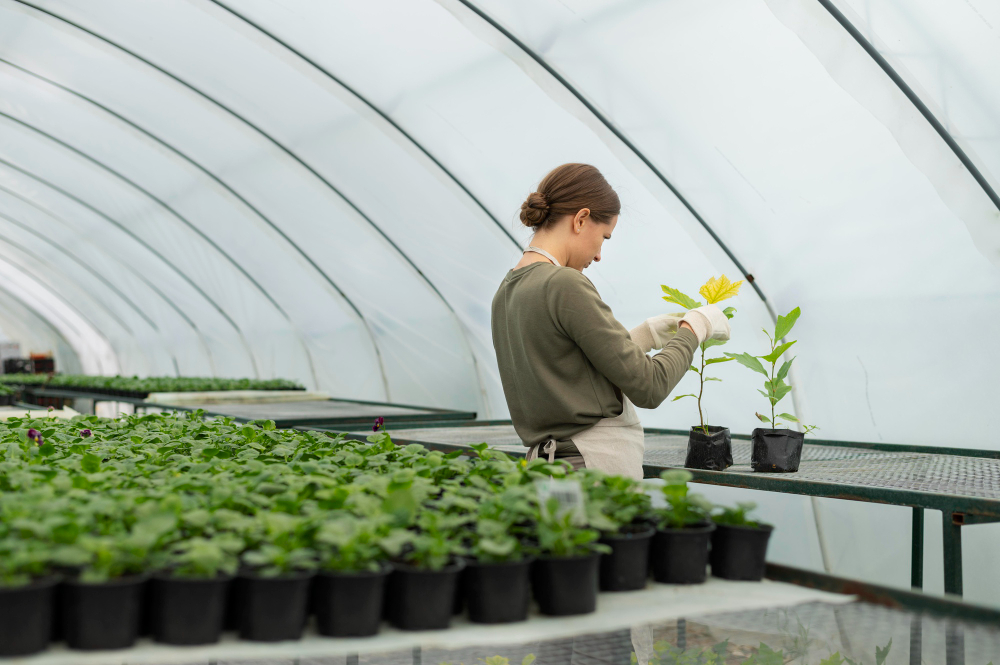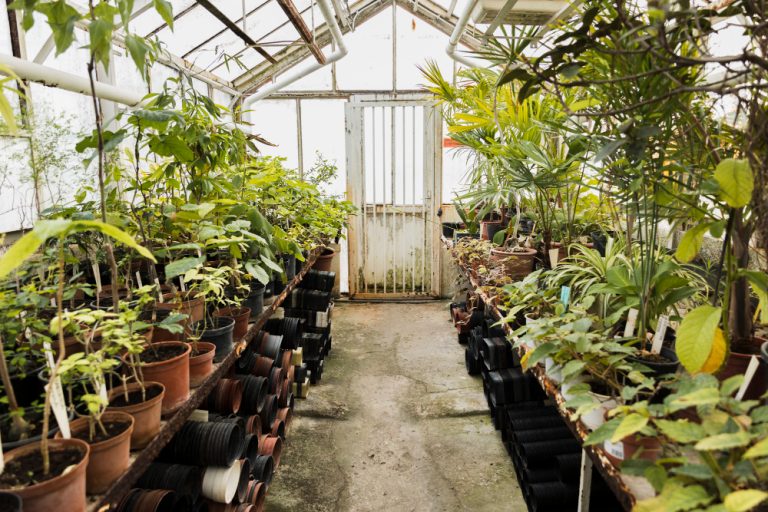
Key Points
Research suggests white diffused polyethylene film is effective for hot weather,scattering sunlight to prevent scorching.
Clear greenhouse plastic and diffused(white)plastic also seem likely to help by diffusing light and reducing heat stress.
The evidence leans toward using UV-resistant films like Ginegar Greenhouse Film for advanced protection in hot climates.
Thickness(6 mil standard,thicker for harsher conditions)and shading systems may enhance protection,but opinions vary on best practices.
Choosing the Right Greenhouse Film
To protect your crops in hot weather,select a greenhouse film that manages heat and provides UV protection.White diffused polyethylene film is often recommended as it scatters sunlight evenly,preventing leaf burn and maintaining a stable temperature.Clear and diffused(white)greenhouse plastics are also suitable,diffusing light to reduce hotspots.For advanced needs,consider Ginegar Greenhouse Film,which offers UV stabilization and anti-drip properties.Ensure the film is UV-resistant,and for extreme heat,combine with shading systems like HDPE shade nets.
Thickness and Additional Tips
A 6 mil thickness is standard for most greenhouses,but thicker films(9 mil or 12 mil)may be better for harsh conditions.Adding shading materials can further reduce heat,especially in arid regions.For permanent structures,PC sheets with UV protection are a good choice,or glass with a sunscreen coating.
Survey Note:Detailed Analysis on Protecting Crops in Hot Weather with Greenhouse Films
This note provides a comprehensive overview of protecting crops in hot weather using greenhouse films,drawing from various reliable sources to ensure a thorough understanding.The focus is on selecting the right materials and techniques to manage heat,ensure UV protection,and optimize light for plant growth,particularly in challenging hot climates.
Introduction to Greenhouse Films in Hot Weather
Greenhouse films are essential for creating a controlled environment that shields crops from extreme weather,including high temperatures.In hot climates,the primary concerns are excessive heat build-up,UV radiation,and potential leaf scorching,all of which can stress plants and reduce yields.The right film can diffuse light,reduce heat stress,and maintain a stable internal climate,ensuring healthier crop growth.
Recommended Greenhouse Films for Hot Weather
Research highlights several types of greenhouse films that are particularly effective for hot weather conditions:
White Diffused Polyethylene Film:This film scatters sunlight evenly,preventing scorching and reducing hotspots that can damage delicate plants.It also offers insulation to maintain consistent temperatures,making it suitable for both small and large greenhouses.According to GreenPro Ventures-Types and Advantages of Greenhouse Film,it is ideal for protecting crops in warmer climates by balancing light and heat.
Clear Greenhouse Plastic:This film diffuses light to prevent sun damage while allowing sufficient light for photosynthesis.It is UV-resistant and weatherproof,making it appropriate for hot weather.greenhousefilm.com-High-Quality Greenhouse Film notes its ability to reduce heat stress,starting at$4.77,making it an affordable option.
Diffused(White)Greenhouse Plastic:Specifically designed to reduce hotspots and prevent leaf burning in high heat,this film is also UV-resistant and helps maintain a stable growing environment.It is priced starting at$8.47 on greenhousefilm.com-High-Quality Greenhouse Film,offering a robust solution for hot conditions.
Ginegar Greenhouse Film:A high-tech option with advanced features,including UV stabilization to protect against harmful rays,light diffusion to reduce heat stress,and anti-drip properties to prevent condensation-related diseases.It is designed to perform optimally in diverse climates,including arid areas,by managing temperature and reducing heat-related plant damage.Agriplast Tech India-Enhancing Greenhouse Efficiency with Ginegar Greenhouse Film emphasizes its suitability for modern protected cultivation.
Co-Extruded Greenhouse Film:This film includes heat control additives and UV inhibitors,offering extended durability(up to 4 years).It provides a balance of light transmission and heat management,making it suitable for hot weather.GreenPro Ventures-Types and Advantages of Greenhouse Film highlights its versatility for various climate conditions.
Hoop House/Poly Plastic:Suitable for high heat,this film offers good insulation and light transmission,protecting crops in extreme weather.It is another option listed on greenhousefilm.com-High-Quality Greenhouse Film,starting at$8.13,fitting different greenhouse structures.
Additional Considerations for Film Selection
Several factors beyond the type of film can enhance crop protection in hot weather:
Thickness:The thickness of the film is crucial.A standard 6 mil thickness is widely used for general-purpose greenhouses,offering a balance between flexibility and durability.However,for harsher conditions,thicker films like 9 mil or 12 mil may be necessary.Agricultural&Greenhouse Plastic Films notes that 6 mil is ideal for moderate climates,while thicker options are better for challenging weather,lasting 3 to 4 years with proper care.
UV Resistance:All recommended films should have UV inhibitors to prevent degradation from intense sunlight,a critical factor in hot climates.This ensures longevity and protects plants from harmful rays.For example,Greenhouse Plastic|Buy Clear UV Resistant 6 Mil Greenhouse Film-Bootstrap Farmer offers a 4-year warranty against UV degradation,emphasizing its durability.
Shading Systems:In very hot climates,additional shading materials can be used in conjunction with the film.HDPE shade nets,with shading rates from 30%to 90%,are UV-stabilized and antioxidant-treated,primarily used outside the greenhouse.Aluminum curtains,with higher reflectivity,are more expensive but effective.INSONGREEN-Best Greenhouse for Hot Climates recommends these for managing heat in arid regions.
Structural Materials:For more permanent greenhouse structures,PC sheets are recommended due to their UV protection layer,making them suitable for hot climates.Glass can also be used but should be treated with a sunscreen coating before summer to manage heat.INSONGREEN-Best Greenhouse for Hot Climates provides detailed guidance on these materials.
Why These Films and Techniques Work
Hot weather poses significant challenges,including excessive heat build-up,which can lead to plant stress and reduced yields.The recommended films work by:
Diffusing light to prevent direct sunlight from burning leaves,as seen with white diffused and clear plastics.
Reducing heat accumulation inside the greenhouse,maintaining a stable internal environment critical for plant health.
Providing UV protection to shield plants from harmful rays,especially important in intense sun exposure areas.
Offering advanced features like anti-drip properties in Ginegar films to prevent condensation-related diseases,beneficial in high humidity conditions often associated with hot weather.
Practical Implementation and Regional Variations
While the recommendations are general,the choice of film may vary based on specific crop types and regional climate conditions.For instance,vegetable farms and nurseries might benefit more from diffused films,while seasonal growers could opt for cost-effective clear plastics.The current time,07:30 AM BST on Sunday,April 27,2025,is early spring in the UK,but the advice is relevant for planning for summer heat or for regions already experiencing hot weather.
Conclusion
Protecting crops in hot weather with the right greenhouse film involves selecting materials that diffuse light,reduce heat stress,and provide UV protection.White diffused polyethylene film,clear and diffused(white)greenhouse plastics,and advanced options like Ginegar Greenhouse Film are highly recommended.Consider thickness,UV resistance,and additional shading systems for optimal results.By implementing these strategies,growers can ensure healthier crops and higher yields,even in challenging hot climates.




